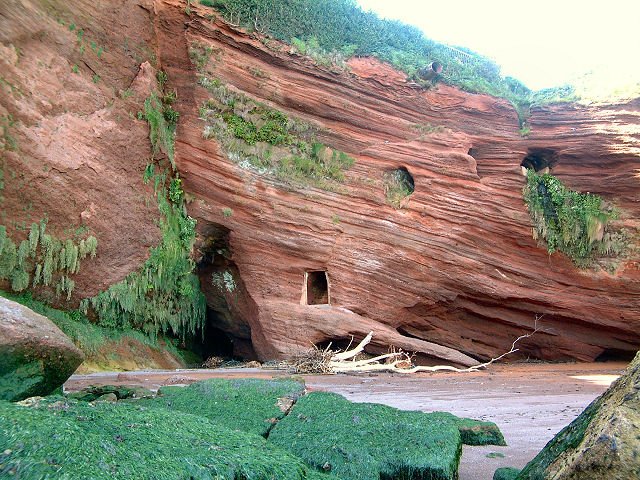 |
| Horse Cove, Dawlish |
Another spot of local geography: Horse Cove is a small and usually inaccessible cove at Dawlish between Coryton Cove and Shell Cove. I took the above picture (now at Geograph) when I walked round at low tide four years ago.
I just spotted that the newspapers had some excellent aerial shots in February, notably the Daily Mail - see the second image in The £1.7m house whose sea view just got closer: Home at cliff edge as 15ft garden disappears after landslide (10th February 2011) - concerning the precarious position of a clifftop house above the cove following recent cliff falls.
The whole changeability of the coast extends to placenames. A look at Ordnance Survey maps up to the mid-1900s - see Old Maps - shows the above location unnamed, and Horse Cove is what is now called Shell Cove. Shells do figure in older accounts: an article on Teignmouth and Dawlish in The Bristol Mercury and Daily Post for June 16, 1884, says:
The Cowrie cove, or shell beach, just beyond Coryton Cove, is a favourite for ladies; it can only be reached at low water, or through the private tunnel.
Shell Cove just seems to have solidified as a placename over the past century. Other location names have been more durable: Coryton Cove (aka Coryton's Cove) was named after the Corytons, landowners who lived at Cliff Cottage above the cove (see page 308, A complete parochial history of the county of Cornwall). As I mentioned at the DHS blog - 1885: Dawlish "death trap" - Coryton Cove was also called the Gentlemen's Cove, because of its historical use for segregated male bathing. The three railway tunnels nearest Dawlish were similarly named after the respective landowners: the Coryton tunnel after Jane Coryton; the Phillott after the Rev. Charles Phillott, of the Clevelands; and the Kennaway after Mark Kennaway, who owned Lea Mount, the promontory through which the tunnel runs (see the Dawlish Community Trust flyer).
A feature of Horse Cove that intrigues me is the rectangular tunnel entrance with steps leading up. At the time I visited it wasn't accessible; the ledge leading up to it had eroded too badly. Where does it go? Is it to do with the railway or was it the abovementioned "private tunnel" to the beach?
- Ray
No comments:
Post a Comment